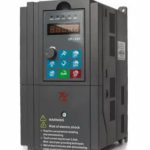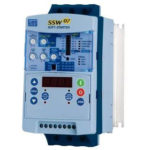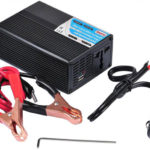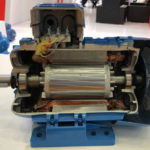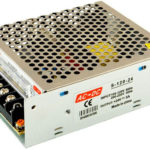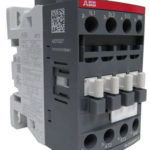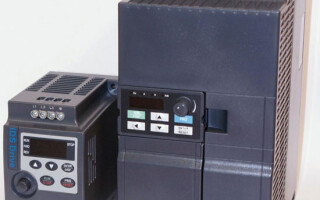In various situations, it may be necessary to convert the frequency of the initial current into a current with a regulated frequency voltage. This is required, for example, when operating asynchronous motors to change their rotation speed. This article will discuss the purpose and principle of operation of the frequency converter.
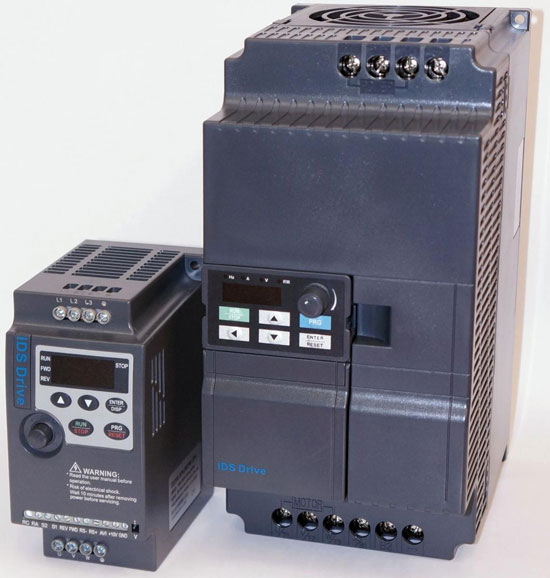
Content
What is a frequency converter
A frequency converter (FC) is an electrical device that converts and smoothly regulates single-phase or three-phase alternating current with a frequency of 50 Hz into a similar type of current with a frequency of 1 to 800 Hz. Such devices are widely used to control the operation of various asynchronous electrical machines, for example, to change the frequency of their rotation. There are also devices for use in industrial high-voltage networks.
Simple converters regulate the frequency and voltage according to the V/f characteristic, complex devices use vector control.
The frequency converter is a technically complex device and consists not only of a frequency converter, but also has protection against overcurrent, overvoltage and short circuit. Also, such equipment may have a choke to improve the waveform and filters to reduce various electromagnetic interference. There are electronic converters, as well as electric machine devices.
The principle of operation of the frequency converter
An electronic converter consists of several main components: a rectifier, a filter, a microprocessor and an inverter.
Rectifier has a bunch of diodes or thyristors that rectify the initial current at the input to the converter. Diode inverters are characterized by a complete absence of ripples, they are inexpensive, but at the same time reliable devices. Thyristor-based converters create the possibility for current to flow in both directions and allow the return of electrical energy to the network when the motor is braked.
Filter used in thyristor devices to reduce or eliminate voltage ripple. Smoothing is performed using capacitive or inductive-capacitive filters.
Microprocessor – is a control and analyzing link of the converter. It receives and processes signals from sensors, which allows you to adjust the output signal from the frequency converter with a built-in PID controller.Also, this system component records and stores event data, registers and protects the device from overloads, short circuits, analyzes the operating mode and turns off the device in case of emergency operation.
inverter voltage and current is used to control electrical machines, that is, to smoothly control the frequency of the current. Such a device produces a "pure sine" output, which allows it to be used in many industries.
The principle of operation of the electronic frequency converter (inverter) consists in the following stages of work:
- The input sinusoidal alternating single-phase or three-phase current is rectified by a diode bridge or thyristors;
- With the help of special filters (capacitors), the signal is filtered to reduce or eliminate voltage ripples;
- The voltage is converted into a three-phase wave with certain parameters using a microcircuit and a transistor bridge;
- At the output of the inverter, rectangular pulses are converted into a sinusoidal voltage with specified parameters.
Types of frequency converters
There are several types of frequency converters, which are currently the most common for production and use:
Electromachine (electroinduction) converters: are used in cases where it is impossible or inappropriate to use electronic frequency converters. Structurally, such devices are asynchronous motors with a phase rotor, which operate in the generator-converter mode.
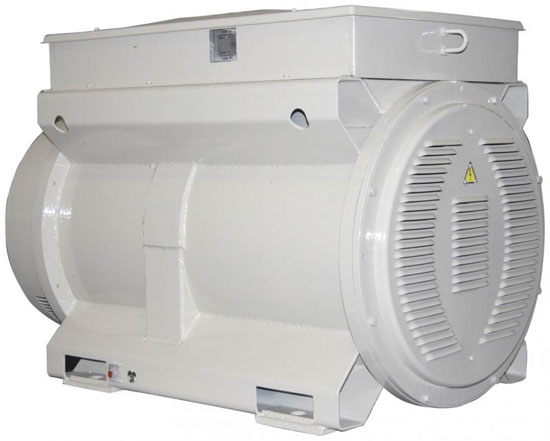
These devices are scalar controlled converters. At the output of this device, a voltage of a given amplitude and frequency is created to maintain a certain magnetic flux in the stator windings.They are used in cases where it is not necessary to maintain the rotor speed depending on the load (pumps, fans and other equipment).
Electronic converters: widely used in all working conditions for various equipment. Such devices are vector, they automatically calculate the interaction of the magnetic fields of the stator and rotor and provide a constant value of the rotor speed regardless of the load.
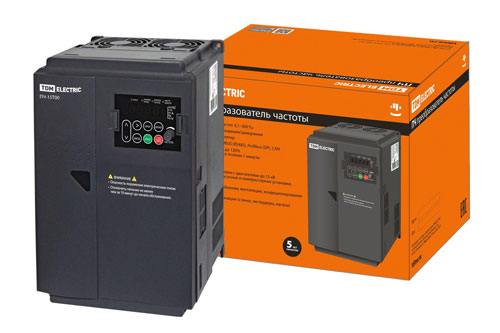
- Cycloconverters;
- Cycloinverters;
- Inverter with intermediate DC link:
- Frequency converter of current source;
- Frequency converter of the voltage source (with amplitude or pulse-width modulation).
By scope, the equipment can be:
- for equipment with power up to 315 kW;
- vector converters for power up to 500 kW;
- explosion-proof devices for use in explosive and dusty environments;
- frequency converters mounted on electric motors;
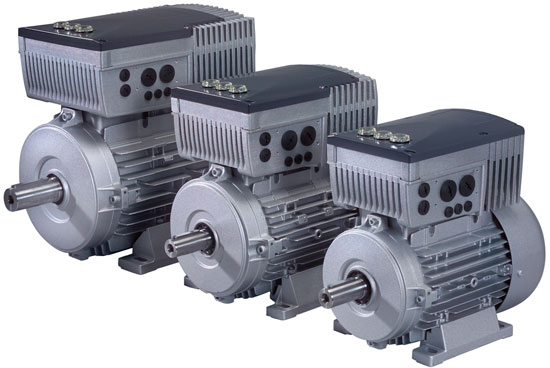
Each type of frequency converter has certain advantages and disadvantages, and is applicable to different equipment and loads, as well as working conditions.
The frequency converter can be controlled manually or externally. Manual control is carried out from the control panel of the inverter, which can adjust the speed or stop the operation. External control is carried out using automatic control systems (APCS), which can control all device parameters and allow you to switch the scheme or operation mode (via FC or bypass).Also, external control allows you to program the operation of the converter depending on the operating conditions, load, time, which allows you to work in automatic mode.
Why might an electric motor need a frequency converter?
The use of frequency converters makes it possible to reduce the cost of electricity, the cost of depreciation of motors and equipment. They can be used for cheap squirrel-cage motors, which reduces production costs.
Many electric motors operate in conditions of frequent change of operating modes (frequent starts and stops, changing load). Frequency converters allow you to smoothly start the motor and reduce the maximum starting torque and heating of the equipment. This is important, for example, in hoisting machines and allows you to reduce the negative impact of sudden starts, as well as to eliminate the swinging of the load and jerks when stopping.
With the help of the inverter, you can smoothly regulate the operation of blowers, pumps and allows you to automate technological processes (used in boiler houses, in mining, in the oil and oil refining sectors, at waterworks and other enterprises).
The use of frequency converters in conveyors, conveyors, elevators allows you to increase the service life of their components, as it reduces jerks, shocks and other negative factors when starting and stopping equipment. They can smoothly increase and decrease the engine speed, perform reverse movement, which is important for a large number of high-precision industrial equipment.
Advantages of frequency converters:
- Reducing energy costs: by reducing starting currents and adjusting engine power based on load;
- Increasing the reliability and durability of equipment: allows you to extend the service life and increase the period from one technical service to another;
- Allows you to implement external control and management of equipment from remote computer devices and the ability to integrate into automation systems;
- Frequency converters can operate with any load power (from one kilowatt to tens of megawatts);
- The presence of special components in the composition of frequency converters allows you to protect against overloads, phase failure and short circuit, as well as to ensure safe operation and shutdown of equipment in case of an emergency.
Of course, looking at such a list of advantages, one might wonder why not use them for all engines in the enterprise? The answer here is obvious, alas, but this is the high cost of chastotnikov, their installation and adjustment. Not every business can afford these costs.
Similar articles:
